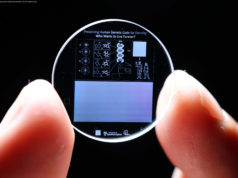Given that there are so many laptops and laptop configurations out there, we’ve gone out and found our favorites for data science so you don’t have to.
So much of the world today is driven by data, so there’s a lot of need for data science and data modeling out there. That also means that there are more and more people getting into it, and if you want a laptop that’s well suited for these sorts of data-crunching tasks, well, then only certain things are going to work. That’s why we’ve collected our favorite picks for the best laptops for data science, ranging across various price points and spec configurations, so you can get something that really fits your needs.The Best Laptops for Data Science
Buy the if you want the best overall laptop for data science and data modeling
Buy the if you want the best MacBook for data science and data modeling
Buy the if you want a budget laptop for data science and modeling
Buy the if you want the best performance for data science and modeling Dell XPS 15 LaptopBest overall laptop for data science and data modeling
Being the best overall doesn’t mean that you have the best specs, but rather something that does a good job of balancing cost vs performance, and the Dell XPS 15 does an excellent job of it. Under the hood, it has an Intel Core i7-13700H, which is a mid-to-high-end CPU that’s well-balanced for crunching numbers and relatively large datasets. It can also handle various types of machine learning, so if you use that a lot in your work, then this is a perfect option. Also, while not as important, it does come with an Intel Arc A370M GPU, which can help with some simulation and machine learning tasks, although it is an entry-level GPU, so don’t expect much.
Besides the solid CPU, you get 32GB of DDR5 RAM, which would be a lot for normal productivity work, but with large databases and datasets, having a lot of RAM means less slow-down when loading things in and using apps as you work. Also, since it’s the faster and newer DDR5 RAM, the overall process will be smoother, although not by a ton, but it’s a nice additional bit of performance to have. The 512GB of storage using an SSD also means faster overall performance, although the storage might be an issue if you run a lot of different large sets, so that’s something to consider.
As for the screen, it’s a 15.6-inch panel that runs an FHD+ resolution, so it’s perfectly fine for viewing over large periods. It can also hit 500 nits of peak brightness, so you’ll be able to use it in most environments, even with direct lighting, which is very useful in certain environments. Overall build is rather excellent, and you’ll probably also be happy to know that it comes loaded in with Windows 11 Pro, so you won’t have to deal with upgrading it to get any extra features out of it.
MacBook Pro 14Best MacBook for data science and data modeling
If you’re a fan of the Apple ecosystem, then the obvious choice you should go for is the M3 Pro MacBook Pro 14. The main reason for that is that it runs Apple’s newest M3 Chip under the hood, and this configuration especially runs the M3 Pro, which is the second post powerful chip that Apple currently offers. As such, it’s excellent for data science and modeling tasks, given how much power it has, and it will also handle machine learning pretty well, especially compared to some Intel or AMD processors.
What’s even better is that you get 18GB of RAM, and while that may not seem like much compared to some laptops that can hit 32GB, it’s pretty good for Apple, which tends to aim for the 8GB or 16GB capacities.






